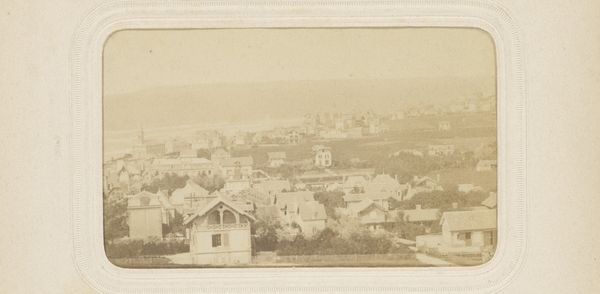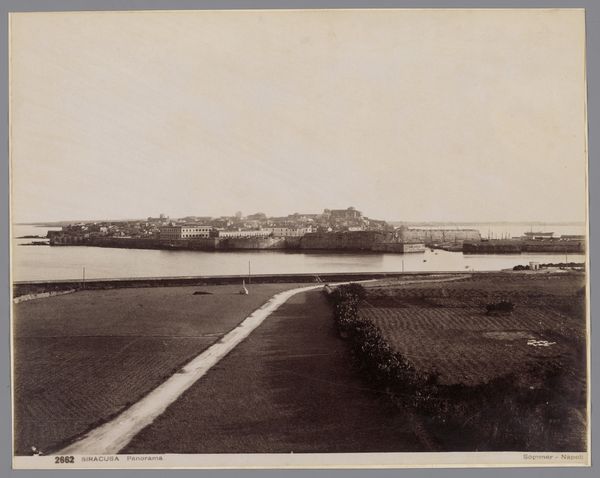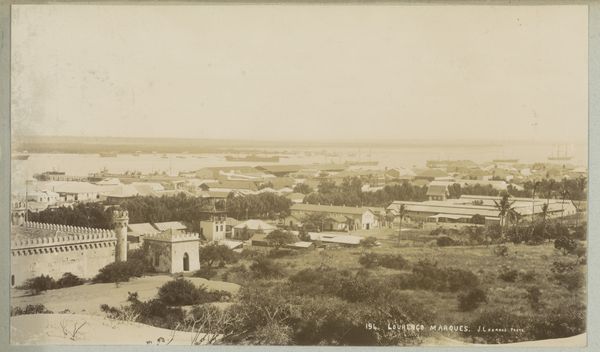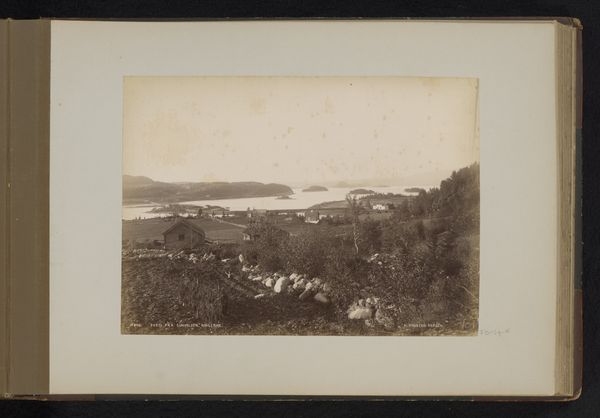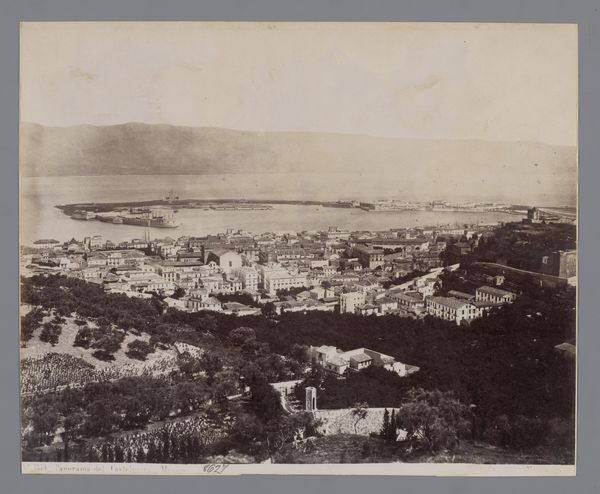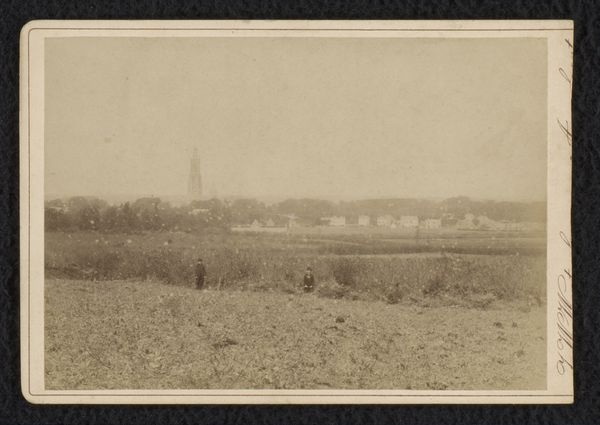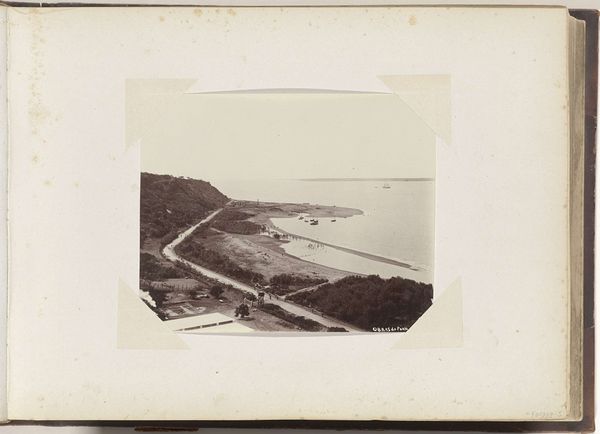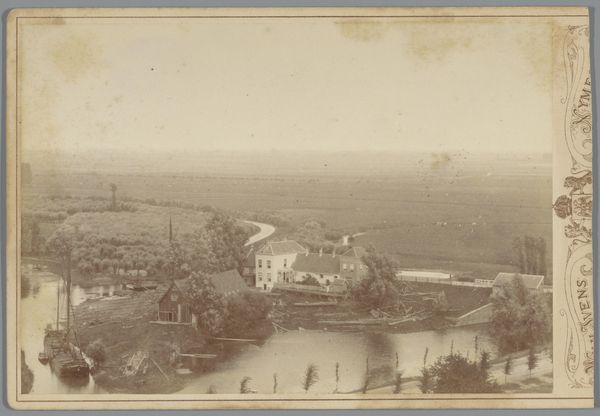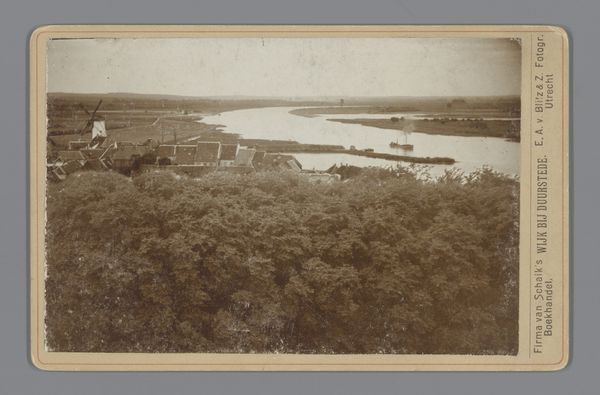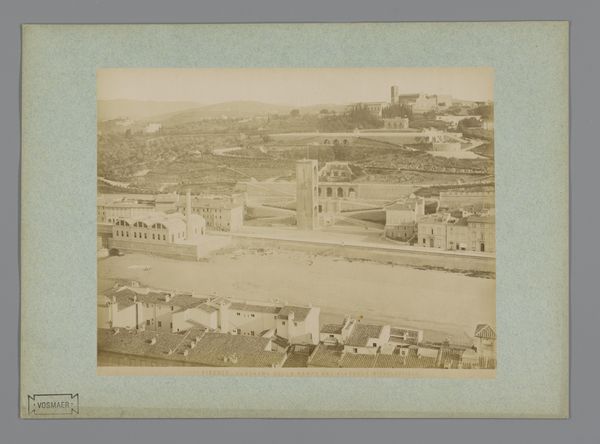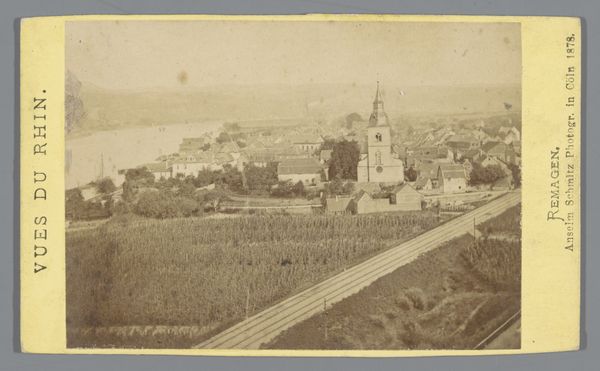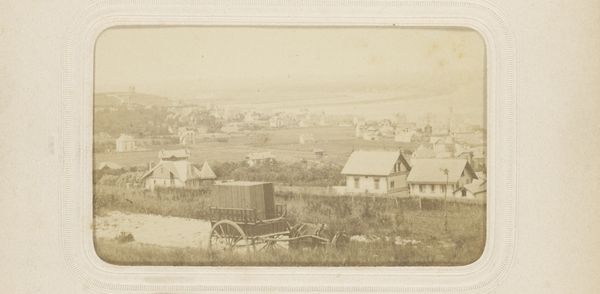
photography, gelatin-silver-print
#
pictorialism
#
landscape
#
photography
#
coloured pencil
#
gelatin-silver-print
#
cityscape
Dimensions: height 108 mm, width 166 mm
Copyright: Rijks Museum: Open Domain
Curator: This gelatin-silver print by M. van der Hoek, titled “Gezicht op Vlieland,” was created in 1896. It's a fascinating example of Pictorialism, wouldn’t you agree? Editor: Immediately, I’m struck by the overwhelming earthiness of the scene, the lack of strong contrasts gives the landscape an incredibly quiet feel. All of those textures blend together— the water, the thatch, and the field. It looks almost tactile. Curator: I'm interested in the artist's choice to portray Vlieland this way. A coastal scene often brings to mind the concepts of journeys and discovery, and water—especially the sea—serves as a potent symbol of the unconscious mind, calling to mind thoughts of vastness and the unknown. Editor: The gelatin-silver print process would've been relatively new then, a shift towards readily produced materials. But this image feels hand-wrought. Is it the artist using soft focus to obscure the sharp realism the medium now offered? Or the specific chemicals used, manipulated during development to produce a desired effect? The materiality is front and center here; photography aspiring to the artistic qualities of painting. Curator: Indeed, the softness pulls the viewer in; the almost dreamlike quality is characteristic of the Pictorialist movement, with the artist striving to present an impression or a mood rather than a sharply defined depiction. The symbolism within the mist, however, cannot be dismissed; perhaps that represents time, blurring boundaries and altering the permanence we usually see in a landscape photo. Editor: Right, because those rooftop materials—thatched roofs particularly— speak to an economy, a cultural aesthetic, that has been systematically replaced. Capturing this village using photographic processes would involve complex equipment and careful staging – all reflecting the industrial and social conditions that made that capture possible. It feels… fragile. Curator: "Fragile," that's a powerful and precise response. Perhaps reflecting a bygone era, caught and presented for future consideration. This photograph provides insight into our relationship with images and how, through photography, time takes shape. Editor: Exactly. Examining images of this place is a prompt to question how it’s produced now, what work is valued, and by whom. A valuable glimpse of material processes that prompt valuable inquiries.
Comments
No comments
Be the first to comment and join the conversation on the ultimate creative platform.
